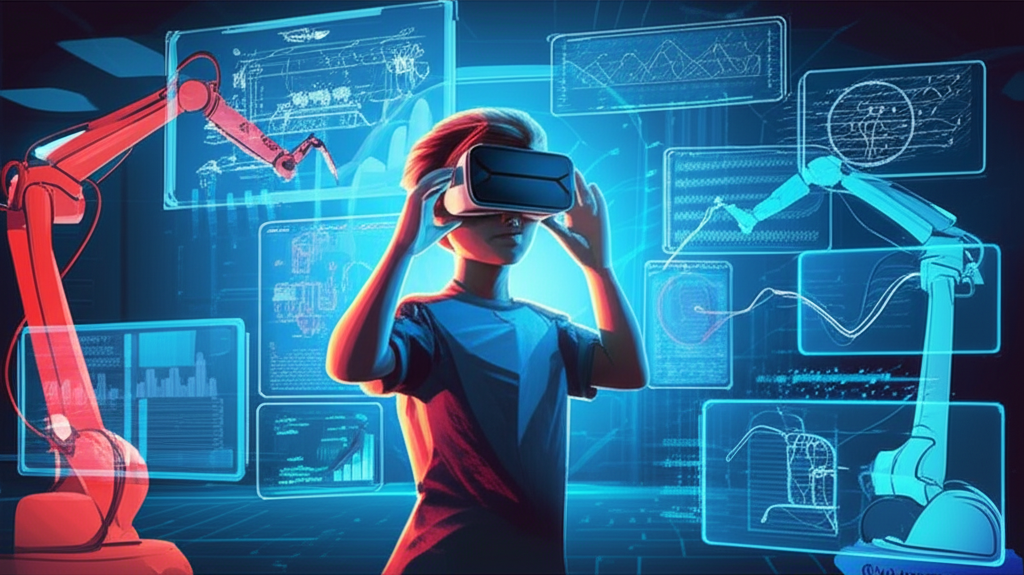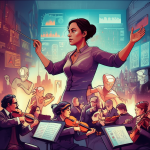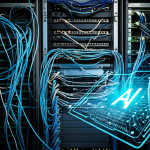In my 25 years traversing the intricate landscapes of technology, leadership, and business innovation, I've witnessed countless shifts. From the nascent days of the internet to the current hyper-speed evolution of artificial intelligence, one constant remains: the profound need for adaptable, skilled human talent. Today, as AI reshapes industries at an unprecedented pace, it's equally poised to revolutionize the very foundation of how we prepare the next generation of engineers. This isn't just about incremental improvements; it's about a paradigm shift, creating a truly personalized, immersive, and efficient learning experience that can bridge the pervasive skills gap felt from the United States to India, across Europe, the Middle East, Australia, and the UK.
I recall a pivotal moment in my early entrepreneurial journey. We were building a complex software system, and our young engineering recruits, fresh out of university, possessed immense theoretical knowledge. Yet, when faced with real-world debugging challenges or unexpected client requirements, there was often a tangible disconnect between their academic understanding and practical application. It wasn't a flaw in their intelligence, but rather a limitation of the traditional, often one-size-fits-all, educational model that couldn't possibly simulate the chaos and nuance of actual industry demands. This experience cemented my belief that education must evolve beyond rote learning, especially in a field as dynamic as engineering.

Today, AI offers us the tools to address these very challenges head-on. It promises not just to refine existing pedagogical methods but to fundamentally transform engineering education by personalizing learning paths, creating dynamic virtual laboratories that transcend physical constraints, and automating assessment to provide immediate, actionable insights. The goal? To forge a new breed of engineers who are not just knowledgeable, but truly industry-ready, equipped with the critical thinking, adaptability, and hands-on experience demanded by the future.
The Dawn of Personalized Learning Paths
Tailoring Education to Individual Potential
One of AI's most profound contributions to engineering education lies in its ability to personalize learning. Imagine an AI tutor that understands a student's unique learning style, their strengths, weaknesses, and even their current emotional state, adjusting the curriculum, pace, and teaching methods accordingly. This isn't science fiction; it's rapidly becoming a reality. In traditional classrooms, educators, despite their best efforts, struggle to cater to 30 or more diverse learners simultaneously. AI algorithms, however, can analyze a student's interaction with course material, their problem-solving approaches, and their performance data to craft a truly bespoke educational journey.
For instance, an AI system might identify that a student excels in visual learning for fluid dynamics but struggles with abstract mathematical concepts. It can then recommend interactive simulations, detailed video explanations, or even connect them with peer groups focused on those specific challenges, rather than forcing them through a standard textbook chapter that might not resonate. This hyper-personalization ensures that no student is left behind, nor is any student held back, allowing each individual to optimize their learning trajectory and truly master complex engineering principles.
Revolutionizing Labs: Beyond the Physical Walls
Immersive Virtual Environments for Practical Skills
The practical component of engineering education, typically delivered through physical laboratories, is often expensive, resource-intensive, and limited by equipment availability and safety concerns. This is particularly true in regions like parts of India or the Middle East where access to cutting-edge equipment might be restricted, or in established institutions in Europe and the UK facing budget constraints. AI-powered virtual laboratories are set to demolish these barriers, offering dynamic, accessible, and safe environments for hands-on learning.
These aren't just glorified simulations; they are immersive experiences leveraging AR and VR technologies to create digital twins of complex machinery, circuits, and industrial processes. Students can design, build, test, and troubleshoot virtual prototypes without fear of breaking expensive equipment or incurring safety risks. Imagine designing a new bridge structure, performing stress tests, and observing material fatigue in real-time within a virtual environment, all before a single physical component is manufactured. This drastically accelerates the learning curve, allowing for iterative design and experimentation that would be impossible in a traditional setting.
I recall another incident from my entrepreneurial life, years ago, where we were commissioning a new assembly line for a manufacturing client. The sheer complexity of integrating various robotic arms, conveyor systems, and quality control sensors meant that any minor programming error or mechanical misalignment could lead to costly downtime and significant material waste. Our engineers spent weeks painstakingly testing each component in isolation and then in combination. If we had the virtual lab capabilities that AI offers today, we could have simulated the entire line, ironed out most of the kinks in a risk-free environment, and significantly reduced commissioning time and cost. This kind of experiential learning, without real-world consequences, is invaluable for cultivating truly confident and competent engineers.
Automating Assessment: Efficiency Meets Insight
Intelligent Feedback and Performance Analytics
Assessment in engineering education has traditionally been a time-consuming process for educators, often resulting in delayed feedback for students. AI changes this entirely. Automated assessment tools, powered by machine learning, can grade assignments, identify common errors, and even provide detailed, personalized feedback in real-time. This frees up instructors to focus on mentoring, project-based learning, and addressing individual student needs, rather than repetitive grading tasks.
Beyond simple grading, AI can analyze performance data across an entire cohort, identifying systemic areas where students are struggling. For example, if a significant number of students are making similar mistakes in a specific circuit design problem, the AI can flag this for the instructor, suggesting a review of the foundational concept or a change in teaching methodology. This provides invaluable insights for curriculum development and continuous improvement, ensuring that educational programs remain relevant and effective.
Bridging the Skills Gap: Preparing Industry-Ready Engineers
The ultimate promise of AI in engineering education is its ability to bridge the widening skills gap. Industries globally, from the advanced manufacturing hubs in the United States and Europe to the booming tech sectors in India and the innovative economies of Australia and the Middle East, consistently demand engineers who are not only theoretically sound but also possess practical problem-solving abilities, critical thinking, adaptability, and digital literacy. Traditional curricula often lag behind the rapid pace of technological change.
AI-driven education systems can dynamically update content to reflect the latest industry trends, introduce students to emerging technologies like quantum computing or sustainable engineering practices, and provide real-world project simulations. By personalizing learning, offering hands-on virtual experiences, and providing immediate feedback, AI ensures that graduates are not just ready for their first job, but are also equipped with the foundational skills and mindset to thrive in a career spanning decades of continuous technological evolution. This holistic approach prepares engineers who can innovate, lead, and contribute meaningfully from day one.
"The true measure of an educational system is not merely how much knowledge it imparts, but how effectively it cultivates the curiosity, resilience, and problem-solving grit required to navigate an unpredictable future. AI, when wielded thoughtfully, becomes our most powerful ally in this endeavor, transforming passive learning into active mastery."
The Road Ahead: Actionable Steps for Educational Institutions and Leaders
Embracing AI in engineering education requires a strategic and measured approach. For educational institutions and leaders, both in established regions like the UK and emerging powerhouses, here are actionable steps to harness this transformative power:
- Invest in AI Infrastructure and Talent: Prioritize funding for robust AI platforms, data analytics tools, and the training of faculty to effectively integrate and leverage AI technologies in their teaching.
- Develop AI-Augmented Curricula: Collaborate with industry experts to design curricula that are not only personalized and adaptive but also incorporate real-world case studies and project-based learning facilitated by AI tools.
- Foster a Culture of Experimentation: Encourage educators and students to experiment with AI tools, providing safe spaces for innovation and learning from both successes and failures in AI-driven environments.
- Address Ethical Considerations: Establish clear guidelines for data privacy, algorithmic bias, and the responsible use of AI in assessment, ensuring fairness and equity for all students.
- Promote Continuous Professional Development: Offer ongoing training for faculty to stay abreast of AI advancements and best practices in AI-enhanced pedagogy, transforming them from traditional instructors into tech-savvy mentors.
The convergence of AI and engineering education presents an unparalleled opportunity. It allows us to move beyond the limitations of the past, to craft a learning experience that is profoundly effective, universally accessible, and perpetually relevant. As an entrepreneur and a leader who has consistently championed the fusion of technology and human potential, I believe that by strategically embracing AI, we are not just educating engineers; we are empowering a generation of innovators, problem-solvers, and leaders who will shape a smarter, more sustainable, and more resilient future for all. This is not just an investment in education; it is an investment in our collective global future.









